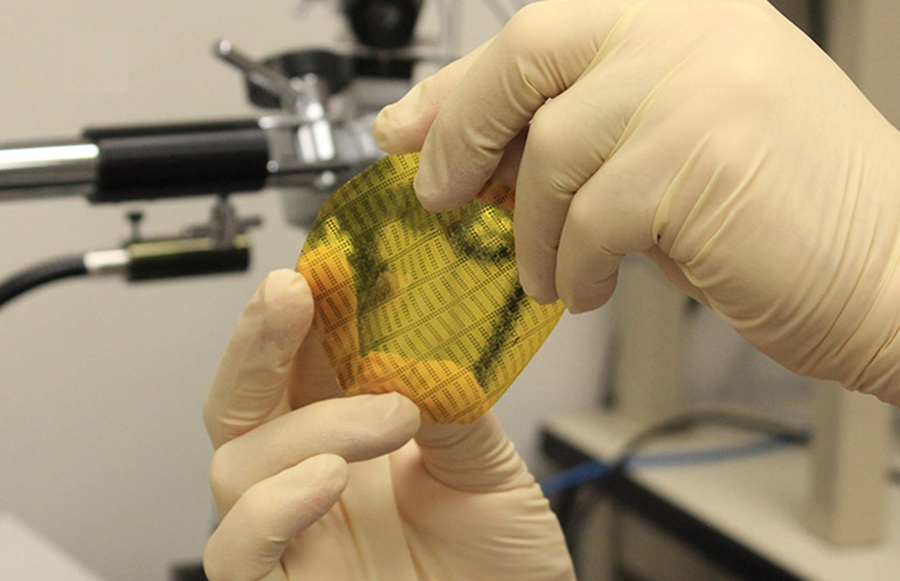The University of Texas at Arlington (UTA) has obtained a patent for a smart skin, created by a UTA researcher, that will give robots more keen sense of touch than humans. On the surface, the electronic skin has a dense forest of flexible zinc oxide nanowires that. When it comes into contact with something, a small electric signal is generated by each of the nanowires signaling that it has been touched.
Read more Electronic Skin for Prosthetic Hands Lets Amputees Feel Pain
“The idea is to have robots work better alongside people,” said Zeynep Çelik-Butler, a UTA electrical engineering professor. “The smart skin is actually made up of millions of flexible nanowire sensors that take in so much more information than people’s skin. As the sensors brush against a surface, the robot collects all the information those sensors send back.”
Çelik-Butler said the sensors are self-powered and do not need any external voltage for operation, as the nanowires are able to produce their own electric current strong enough to generate a useful signal. The nanowires are extremely small, more than 200 times smaller than human hair; each is about 0.2 microns in diameter, while a human hair is about 40 to 50 microns.
Because of their extraordinarily tiny size, a piece of e-skin only a few inches on a side will have millions of them. This gives the e-skin a superb ability to feel things brushing against it, even more so than our natural human skin.
Additionally, the sensors were entirely packaged in a chemical and moisture resistant polyimide that substantially improves usability in harsh surroundings. Because the nanowires are placed inside a flexible base, the entire device can be molded into different shapes. The result is a thin, flexible, self-powered tactile sensing layer, suitable as a robotic or prosthetic skin, reports MedGadget.

In addition to having tactile sensing capabilities, the e-skin can also detect temperature changes and surface variations, an important usability and safety factor for future prostheses.
“These sensors are highly sensitive and if they were brushed over a partial fingerprint, the technology could help identify who that person is,” Çelik-Butler said. “Imagine people being able to ascertain a person’s identity with this hairy robot, as my students call it.”
Read more Hexoskin Smart Shirt Monitors and Records Heart Rate, Breathing and Movement
Teri Schultz, director of technology management in the UTA Office of Research, said the technology shows promise in a number of commercial sectors.
“Robots are the here and now,” Schultz said. “We could see this technology develop with the next generation of robots to allow them to be more productive in helping people.”
She added that the patent fits in well with the health and the human condition theme of UTA’s Strategic Plan 2020: Bold Solutions | Global Impact.












